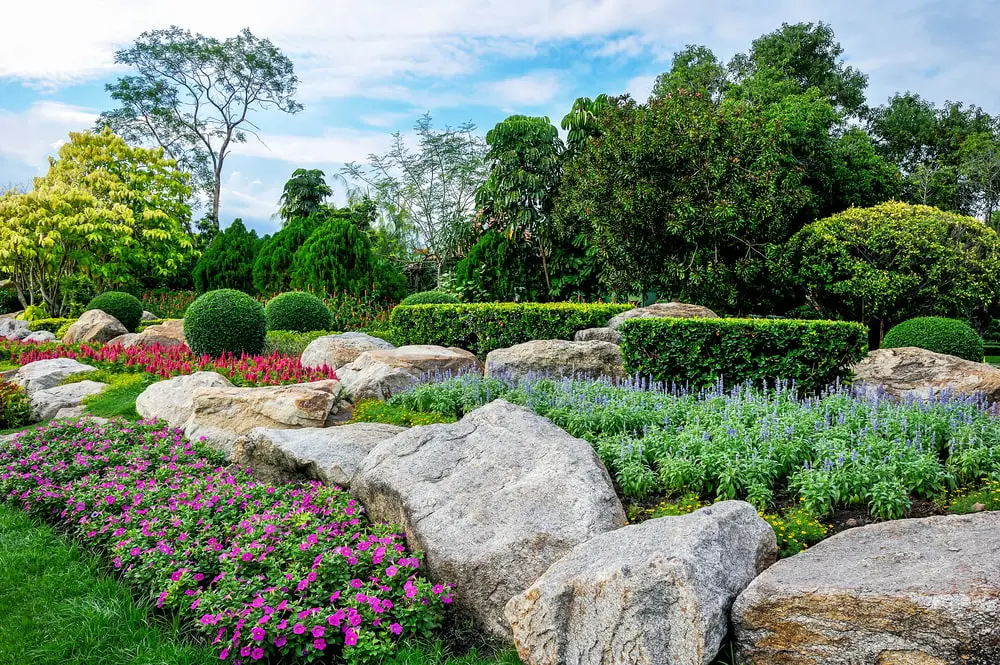The Main Principles Of Hilton Head Landscapes
The Main Principles Of Hilton Head Landscapes
Blog Article
What Does Hilton Head Landscapes Do?
Table of ContentsHilton Head Landscapes for BeginnersFascination About Hilton Head LandscapesThe Greatest Guide To Hilton Head LandscapesHilton Head Landscapes for DummiesHilton Head Landscapes Things To Know Before You BuyThe Main Principles Of Hilton Head Landscapes The 25-Second Trick For Hilton Head Landscapes
Line develops all kinds and patterns and can be made use of in a range of methods the landscape. Line in the landscape is created by the side in between 2 materials, the synopsis or shape of a kind, or a lengthy direct attribute. Lines are an effective tool for the designer due to the fact that they can be utilized to create an infinite selection of shapes and forms, and they manage movement of the eye and the body.

Lines can have one or more features, such as those explained below, however they usually serve different objectives. Number 1. Lines in the landscape - landscapers in bluffton sc. The residential or commercial properties of lines determine how people reply to the landscape, both emotionally and literally. Straight lines are architectural and powerful; they produce an official personality, are typically related to a balanced layout, and lead the eye straight to a prime focus.
Unknown Facts About Hilton Head Landscapes
Straight lines are frequently located in hardscape edges and product. Bent lines create an informal, all-natural, relaxed character that is connected a lot more with nature and unbalanced equilibrium. Bent lines move the eye at a slower rate and add secret to the space by developing covert sights. Vertical lines relocate the eye up, making a room feel bigger.
Upright lines in the landscape include high, slim plant product, such as trees, or high structures, such as an arbor or a bird home on a pole. Horizontal lines relocate the eye along the ground airplane and can make a space feel larger. Reduced lines are extra restrained and create a sensation of rest or repose.
Getting The Hilton Head Landscapes To Work
Reduced lines are created by low yard walls, pathways, and brief hedges. Lines are made use of to draw forms on a plan. In strategy view, they define plant beds and hardscape locations. Lines are additionally developed by the upright forms of constructed functions and plant product. There are 3 primary line types that produce form in the landscape: bedlines, hardscape lines, and plant lines.
Bedlines attach plant product to your home and hardscape because the eye follows the line, relocating the look with the landscape. Hardscape lines are developed by the side of the hardscape, which delineates the built structure. Line can also be produced by lengthy and slim products, such as a fencing or wall.
Some Known Questions About Hilton Head Landscapes.
Type is found in both hardscape and plants, and it is commonly the dominant aesthetic element that spatially organizes the landscape and typically determines the design of the yard. The type of structures, plant beds, and garden accessories additionally identifies the total kind motif of the garden. Official, geometric forms include circles, squares, and polygons.
Plants produce kind in the garden via their lays out or silhouettes, but form can also be defined by a gap or negative area between plants - landscape design hilton head (https://h1tnhdlndscps.creator-spring.com). Circles can be complete circles, or they can be split right into fifty percent circles or circle sectors and integrated with lines to develop arcs and tangents
The Facts About Hilton Head Landscapes Revealed
Circles can additionally be stretched right into ovals and ellipses for more selection and rate of interest. Circles are a strong layout kind because the eye is always attracted to the center, which can be used to stress a focal factor or attach other forms. Number 2. Round forms in hardscape and lawn panels.
The square kind can likewise be segmented and secondhand repetitively to develop a grid pattern. Unlike circles, squares are more powerful on the brink, which can be aligned or overlapped to produce one-of-a-kind patterns and even more complex kinds. Polygons are many-sided forms with straight edges. Triangles, as an example, are three-sided polygons.
Meandering lines frequently imitate the all-natural course of rivers or streams and can be explained as smooth lines with deeply bent wavinesses. Twisting lines (Figure 3) work well for paths, plant bedlines, and completely dry stream beds. Meandering lines can add rate of interest and secret to a yard by leading viewers around corners to discover new sights and rooms.
Hilton Head Landscapes Can Be Fun For Anyone

Number 5. Fragmented sides: stepping rocks in pathway. Form is one of the most long-lasting top quality of a plant (bluffton landscaping). https://www.goodreads.com/user/show/179629915-steven-gonzales. Typical plant types are well established and standardized, as kind is one of the most regular and well-known feature of plants. Kind can likewise be developed via the massing of plants, where the total mass develops a various form than a specific plant.
A very different type has to be made use of with careone or more work well as a focal point, but way too many wreak havoc. Natural plant forms, instead of over-trimmed kinds, must develop the bulk of the make-up. The importance of overall type is a lot more or much less reliant on the checking out perspectivethe type of a tree can appear rather different to an individual standing under the cover versus seeing the tree from a distance in an open field.
The 45-Second Trick For Hilton Head Landscapes
Plant kinds also produce and define the gap or open rooms between the plants, creating either convex or scooped kinds in deep spaces. High-arching tree branches normally develop a concave open space under the branches, and a rounded cover with reduced branches loads the area to create a convex type outdoors room under the tree.

Report this page